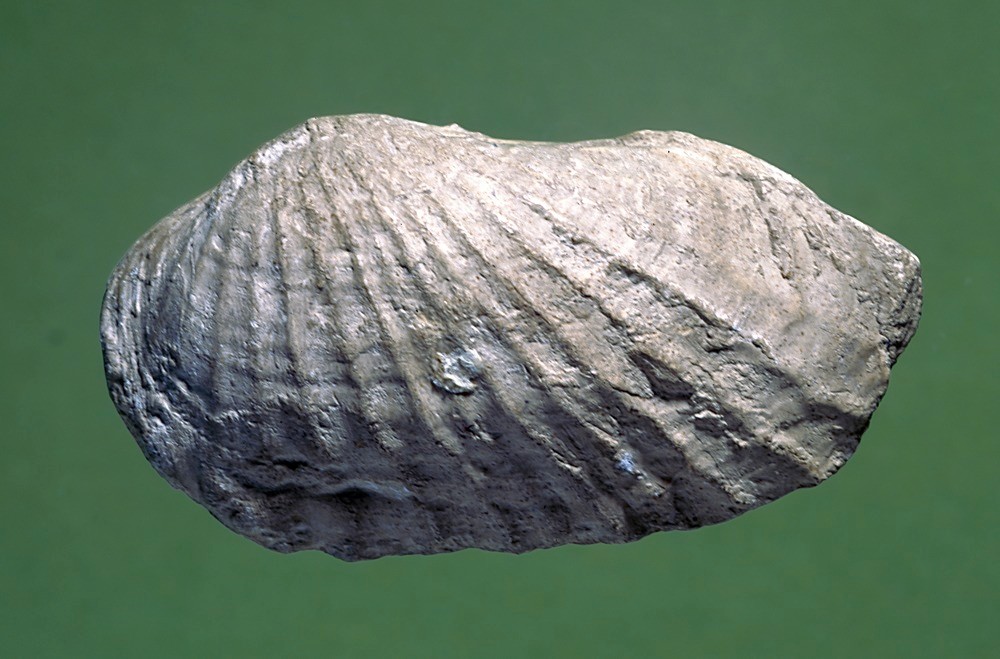| P number: | P549460 |
|---|---|
| Caption: | Pholadomya, a fossil bivalve. |
| Description: | This bivalve can grow up to about 11 cm. long. It first evolved in Triassic times (about 210 million years ago) and is still found living today. Bivalves that lived in deep burrows had a long tube of soft tissue (siphon) that extended to the surface. Pholadomya had an elongate and inflated shell ornamented by a series of ribs extending out from the umbones (the pointed part representing the initial, juvenile shell). The line on the interior of the shell, where the siphon was attached is deeply in-curved (the pallial sinus) showing it to have been a burrowing form. Bivalves are molluscs that first evolved over 500 million years ago during the middle of the Cambrian period. They flourished during the Mesozoic (particularly the Jurassic and Cretaceous) and in the Cainozoic eras. They are abundant in the modern seas and dead shells are often found in the beach sands around the world. The early bivalves are associated with marine palaeoenvironments, but they later colonised brackish and fresh waters. As they are so common in modern times, their mode of life can be extrapolated back into the geological past and used in palaeoenvironmental reconstructions. |
| Photographer: | Unknown |
| Copyright statement: | NERC |
| Orientation: | Landscape |
| Size: | 385.21 KB; 1000 x 659 pixels; 85 x 56 mm (print at 300 DPI); 265 x 174 mm (screen at 96 DPI); |
| Average Rating: | Not yet rated |
| Categories: | Best of BGS Images/ Fossils |
Reviews
There is currently no feedback

